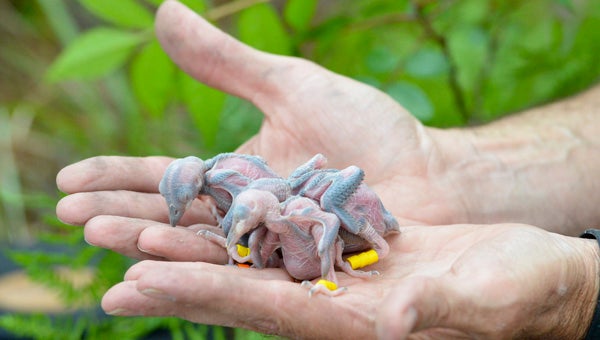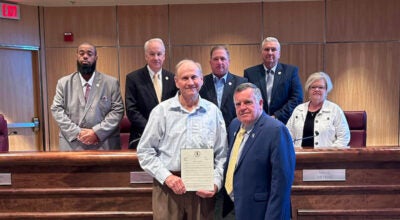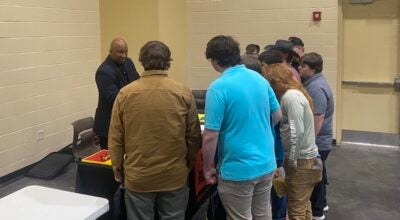Program seeks to preserve woodpecker population
Published 8:37 pm Monday, May 9, 2016

Eric Spadgenske of U.S. Fish and Wildlife holds a pair of birds after banding them for future monitoring during a demonstration on Monday. (Photo by Anthony Richards)
Alabama Power has spent over the past decade attempting to preserve the habitat of the red-cockaded woodpecker by partnering with U.S. Fish and Wildlife.
That partnership was on display during a demonstration on Monday of baby birds getting banded for future reference.
“The program is used to enhance the habitats along the Coosa River,” Alabama Power biologist Chad Fitch said.
According to U.S. Fish and Wildlife biologist Eric Spadgenske, the red-cockaded woodpecker prefers to make its home in longleaf pines that are 80 years or older.
“They are the only woodpeckers in North America that choose to make their home in longleaf pines that are still living,” Spadgenske said.
The older a tree, the less outer layer of sap that a bird must drill through before it reaches the interior of the tree, Spadgenske said.
A group of cavity trees is called a cluster. There are about 10 clusters on the area of land that Alabama Power owns on Lake Mitchell.
The nesting season for the red-cockaded woodpecker last from April to June, and during this time Alabama Power continually checks on the nests every seven to 10 days.
“We will monitor during that time to keep track of the number of chicks and fledglings,” Fitch said.
According to Fitch, in order to maintain the open-park habitat, prescribed burns are scheduled about every two years to cut down on the possibility of trees other than longleaf pines.
Each nest will contain about four eggs, which have an 11-day incubation period prior to hatching.
According to Spadgenske, the entrance of the nest is about 3 inches in diameter and 6 inches tall, and can take about six months to carve out.
Spadgenske climbed up a ladder and used rope around the tree for extra support. Once at the nest hole, he gathered and placed the birds in a coffee can to carry them down the ladder.
Once on the ground, he attached the bands to the legs of each bird, while recording the band number, age of the bird, date.
According to Spadgenske, no bird will have the same band number, which allows for each bird to remain unique within the system.
The bands are also color-coded so that the birds can be identified in the future from a distance and without the need of recapture.
Three birds completed the process of being banded during the demonstration. Afterward, Spadgenske carried the birds back up the ladder and placed them back in the nest.
If the number of birds outweighs the number of cavities, artificial nests consisting of PVC pipe placed inside a carved out hole in the tree.
“They’ll sleep their every night and will protect their nest from other red-cockaded woodpeckers,” Spadgenske said.
The long-lead habitat originally stretched from Virginia down to Florida and as far west as Texas and covered about 90 million acres of land, Spadgenske said.
“Now it has declined to 3 percent of the original size,” Spadgenske said. “All the species that depended on that have become endangered.”
The species since the endangered spices list was created in the 1970s and there are less than 250 breeding groups of red-cockaded woodpeckers in Alabama.
“They were one of the first on the list, but now they have stabilized,” Spadgenske said. “This is definitely a success story.”






